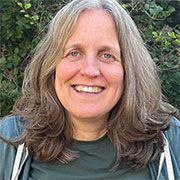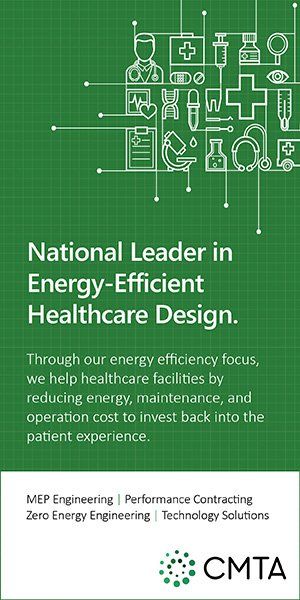Interview
Taking it to the Street
Beth Kangas, PhD, executive director, Zumbro Valley Medical Society (ZMVS) and Foundation, director, ZVMS Street Medicine
What can you tell us about street medicine?
Street medicine brings health care out of traditional clinical settings to people where they are, specifically those experiencing homelessness. Many street medicine programs concentrate on serving unsheltered or rough-sleeping individuals. However, because the unhoused population in Olmsted County is relatively small compared to Los Angeles or other large cities, Zumbro Valley Medical Society (ZVMS) Street Medicine serves people experiencing any of the full range of unstable housing: sleeping in parks and cars, staying in shelters, couch surfing, as well as those transitioning to stable housing and those in permanent supportive housing.
Unhoused community members often speak about a distrust of medical care, based on their previous experiences with systems unsympathetic to their needs and circumstances. They commonly encounter stereotypes and misconceptions about homelessness. The care they are prescribed is often for patients who have a safe, quiet, clean, and dry environment to live in; a bed to recover in; a predictable routine of food and drinking water to take their medications; an accessible electrical source for any medical devices or the cell phones that are required to schedule appointments; and reliable transportation to make follow-up appointments. By contrast, as the Street Medicine Institute founded in 2009 states, street medicine “goes to the people” to provide care.
How did Zumbro Valley Medical Society become involved with street medicine?
ZVMS Street Medicine began in 2020 with a seven-part online series for Mayo Clinic Alix School of Medicine (MCASOM) medical students on serving patients experiencing homelessness. We asked community partners to tell us: “What would you like doctors to know about the people you serve?” The series culminated in a presentation to the Rochester community by Jim Withers, MD, founder of the Street Medicine Institute in Pittsburgh. Inspired by the presentation, Jeff Woods, a medical student at the time, helped create a street medicine selective (“optional elective”) for MCASOM medical students.
Over the past four years, ZVMS Street Medicine has grown in ways we could not have imagined. We currently bring together physicians, medical students, community partners and individuals with lived experience to identify and create effective ways to improve care for people experiencing homelessness.
Please tell us more about your work.
We provide direct patient care through street rounds and at community clinics and their satellites. In street rounds, Mayo Clinic physicians and medical students join county social workers to visit people in encampments, under bridges and on street corners to identify the medical and social services they need. Community clinics begin with concentrated one-day events, such as the foot care clinic we held at a local day center in December 2022. We then disperse the skills and supplies to smaller drop-in clinics at additional locations, such as the weekly foot soaks a physician and medical student provide at a local overnight shelter. We have also held three eye care clinics, which have served over 300 guests and provided no-cost prescription eyeglasses to over 200 of them.
We are readying to launch year four of the street medicine selective for MCASOM medical students. Prior to that, we will host a panel for all first-year MCASOM medical students featuring several of our colleagues with lived experience.
What has been the impact of your street medicine training on medical students?
Medical student interest in our 20-hour longitudinal selective and ZVMS Street Medicine in general has grown. Last year, the street medicine selective attracted two-thirds (65%) of the MCASOM first-year class of future physicians. Following the selective, medical students take on leadership positions and participate in outreach. With funds from the Minnesota Department of Health, we are in the process of studying the impact of our street medicine training on medical students who have taken the selective. We look forward to analyzing and interpreting the interviews we are currently conducting with 25 former participants.
Final reflections from year three selective participants indicated that students appreciate the opportunity to broaden their perspectives on medicine and on themselves. For example, one student said, “I learned that I have some prejudices that I didn’t know existed.” Another said, “I learned that medical care extends beyond just treating physical ailments.” Still another said, “While most of medical school in the first year was full of people in suits coming to talk to us in a classroom about topics they themselves learned in a classroom, street medicine brought us into the spaces of populations that we hope to care for.”
We need to recognize people’s humanity and find ways to be welcoming rather than judgmental.
Why should individuals with lived experience of homelessness assist with your program design?
ZVMS Street Medicine began with the intent to add people with lived experience of homelessness to our teams. First, we wanted to ensure our novel approach to providing care and training to the medical community was sustainable before promising individuals with lived expertise a long-term structural role. We did not want to undermine their trust because of uncertainty or have their involvement go uncompensated. We are thrilled now to be able to add this missing piece to our work.
To prepare to incorporate individuals with lived expertise of homelessness into our program teams and leadership, we held a co-design project in November 2023 to be able to do so as thoughtfully and inclusively as possible. Seven individuals drew on their direct experience to help develop an equitable engagement playbook. In January, we trained three of the original members to co-facilitate our second co-design project. In March and April, we welcomed new team members to create guidelines for developing recuperative care in Olmsted County. New members have since joined our efforts.
Can you tell us more about your work with recuperative care as a part of street medicine?
In January 2024, recuperative care (“medical respite” in other states) became a Medicaid-supported service in Minnesota. The National Institute for Medical Respite Care defines medical respite care as acute and post-acute care for people experiencing homelessness who are too ill or frail to recover from an illness or injury on the streets or in a shelter but who do not require hospital-level care. Currently, recuperative care services do not exist in Olmsted County. To develop this care locally, we opted to start by focusing on the experiences, barriers and expectations of people who might use the services. In addition to the co-design project we implemented in March and April to begin to understand the perspectives of potential end users, our team of community partners and colleagues with direct experience of homelessness visited existing Minnesota medical respite programs and attended sessions on trauma-informed policies and design. We are now ready to host our first guest in August as a pre-pilot to explore the logistics and scalability. For a first guest, we selected someone needing a colonoscopy; preparing for a colonoscopy in a private 24-hour recuperative care bed is much more comfortable than in a crowded overnight or day shelter.
What are some common misperceptions or challenges about doing street medicine?
One misperception about street medicine is overlooking the importance of relationship-building. Street medicine serves individuals who have been disenfranchised from mainstream medical care; therefore, we need to earn their trust. We know it can take 10 or more touchpoints before people become open to seeking care. In each touchpoint, we want to avoid bringing the stereotypes and judgments that our unhoused community members often encounter. Because of the importance of building rapport, we use a broad definition of medical consultations. Street medicine rounds can include simply a greeting or an offer of water, even if they are unaccepted.
Building a system that caters to people’s needs and circumstances encourages innovation, particularly when providing care in people’s own environments. For example, we want to create ways to offer care without the barrier of appointments, yet with the ability to follow up with individuals when needed.
Please share some of the positive things you have seen through your involvement with street medicine.
Through my involvement with street medicine, I have seen and heard many positive things: exclamations of “I can see!” when we distribute no-cost eyeglasses after an eye care clinic; guests’ sighs of relaxation during foot soaks after their long day of walking, at times in cramped shoes; requests that an internal medicine resident become someone’s primary care provider because they treated them with dignity; or medical students’ appreciation of hearing people’s stories as part of their medical education.
I have also seen human connections, leadership and empowerment. Rather than listening mainly for the algorithm that will help produce a diagnosis and treatment plan, physicians at the foot soaks listen to whatever life details surface, with the casualness of humanity. Because street medicine requires us to adapt to people’s circumstances rather than having them adapt to existing hierarchies and practices, it offers many opportunities for leadership and empowerment. A medical student can originate a dermatology clinic that serves 50 guests in a Saturday afternoon. Two people with direct experience of homelessness can co-lead a pilot plan for recuperative care. Grounded in our values of meeting people where they are, we can do much together.
Please tell us about plans to scale your project to other parts of Minnesota.
We have been working with the Minnesota Medical Association, University of Minnesota (UMN) medical students and the UMN Mobile Health Initiative team to develop street medicine at the University of Minnesota Twin Cities and Duluth campuses. ZVMS Street Medicine medical student leaders have met with UMN medical students to provide guidance on creating a street medicine elective, an interest group, and/or one-day community clinics. We cautioned against making street medicine a requirement within a medical school; trust and relationships are built with unhoused community members through a willingness and openness to participate rather than through obligation. While the panels featuring individuals with lived expertise that we provide for first-year MCASOM medical students are required, they serve to counter stereotypes by illustrating diverse experiences and set the groundwork for subsequent relationship-building.
We are also interested in working with other communities in Minnesota to discover ways to incorporate people with direct experience of homelessness into policies, plans and programs.
How can physicians contribute to the ongoing development of street medicine?
Beyond contributing to the development of street medicine, physicians can help improve access to care by raising awareness and advocating for people experiencing homelessness within traditional clinical settings and on a broader scale. Instead of the dehumanization and criminalization of homelessness, we need to recognize people’s humanity and find ways to be welcoming rather than judgmental.
The current health situation requires our compassion and action. People lacking secure housing often face intertwining health conditions, including mental illness, addiction, chronic diseases and injuries. These health conditions can affect their ability to stay housed and gainfully employed. Being unhoused, in turn, can exacerbate their health conditions. People without a stable place to live are likely to experience increased morbidity and mortality. The National Health Care for the Homeless Council noted that unhoused individuals in their late 40s and early 50s present with health and functional needs of their housed peers who are in their 60s or 70s (but without access to Medicare benefits). While the average life expectancy in US adults is 79 years, it is only 41 years in people experiencing homelessness.
Street medicine is an invitation for everyone – in the hospital, clinic or classroom – to work to improve care.
Beth Kangas, PhD,
executive director, Zumbro Valley Medical Society (ZMVS) and Foundation, director, ZVMS Street Medicine.
MORE STORIES IN THIS ISSUE
cover story one
Health Care at the Crossroads: Securing the future of patient care
By Lisa Schweiger, MD, and Nick VanOsdel, MD
cover story two
Talking to Adolescent Patients: A new toolkit to improve communication
















